Hearing scratching, scurrying, or clawing sounds inside your walls? You likely have squirrels that have made themselves at home within your home’s structure. These rodents seek shelter in wall voids for warmth, safety, and to raise their young. This comprehensive guide focuses specifically on how to effectively and safely remove squirrels from your walls and prevent future infestations.
Quick Picks: Best Products for Squirrel Wall Removal
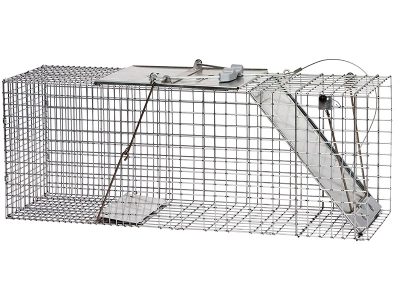
Humane Option
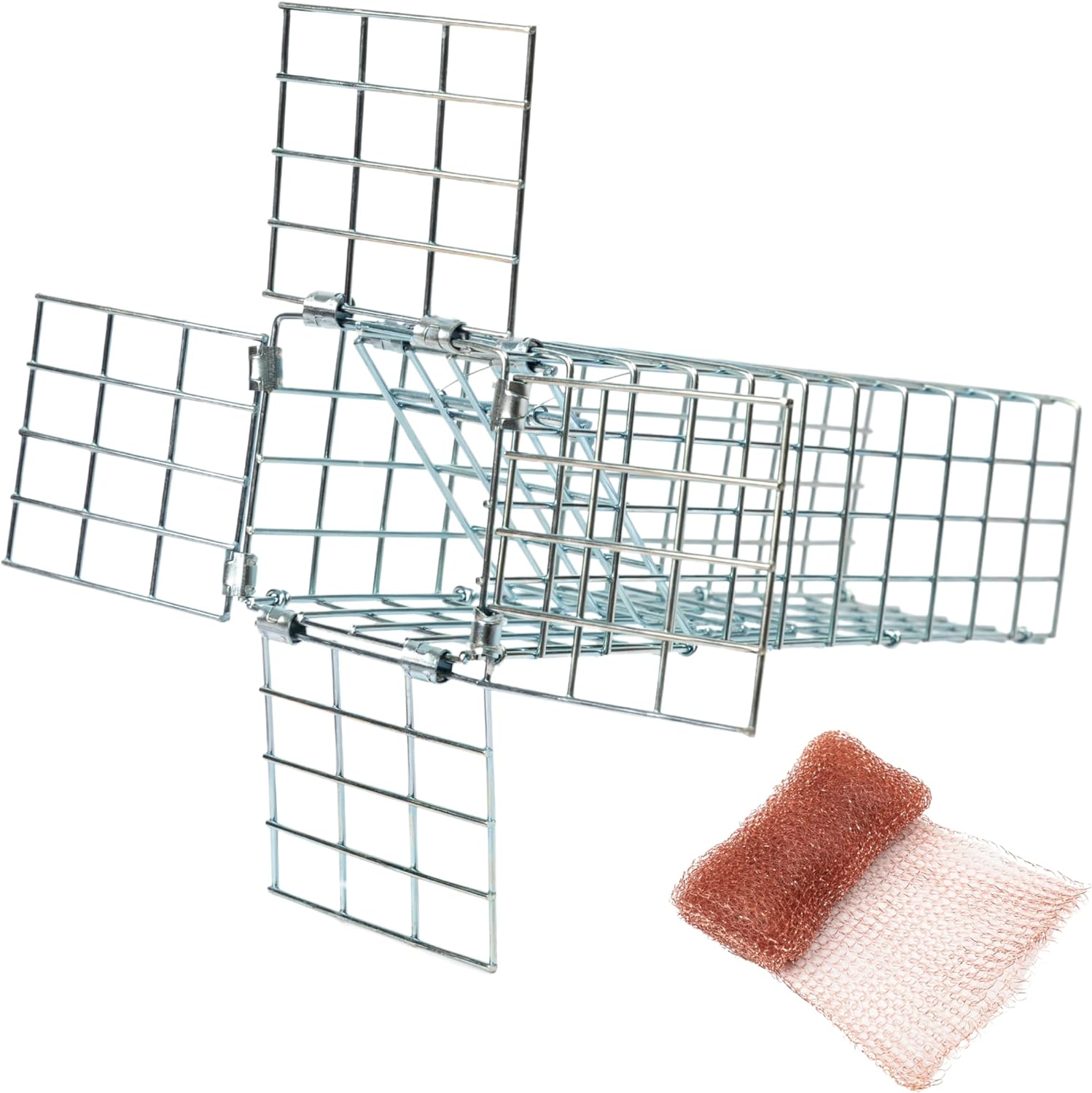
Set and Forget
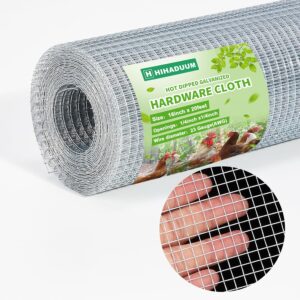
Best for Sealing
Why Squirrels Enter Your Walls
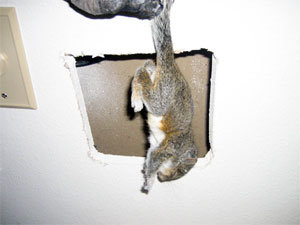
Understanding why squirrels take up residence in your walls is the first step toward effective removal. These rodents aren’t simply lost or trapped—they’ve deliberately chosen your home for specific reasons:
Warmth & Shelter
Wall voids provide insulated protection from harsh weather conditions and predators, making them ideal winter nesting sites.
Nesting Sites
Female squirrels seek safe, secluded spaces to give birth and raise their young, with peak breeding seasons in early spring and fall.
Safety
The narrow confines of wall spaces protect squirrels from larger predators while providing easy access to food sources in your yard or neighborhood.
If you hear scratching in your walls during March-April or August-September, you may be dealing with a mother squirrel and her babies. Removing the mother without addressing the young can create additional problems with orphaned babies dying inside your walls.
Signs of Squirrels in Your Walls
Before attempting removal, confirm that the sounds you’re hearing are indeed caused by squirrels. Here are the key indicators that point to squirrel activity in your walls:
Step-by-Step Wall Squirrel Removal Process
Removing squirrels from your walls requires a systematic approach to ensure all animals are safely removed and cannot return. Follow these steps for effective removal:
1. Identify All Entry and Exit Points
The first crucial step is locating how squirrels are getting into your walls. Without identifying and eventually sealing these openings, you’ll face an ongoing battle with reinfestation.
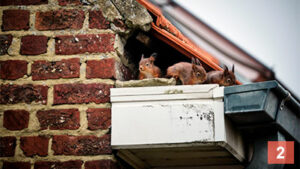
Damaged roof vents are common entry points
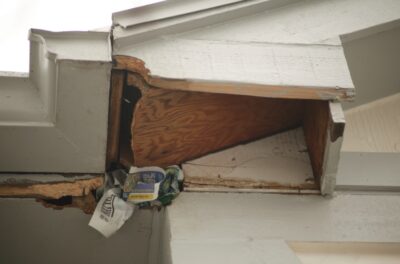
Squirrels often gnaw through soffit areas
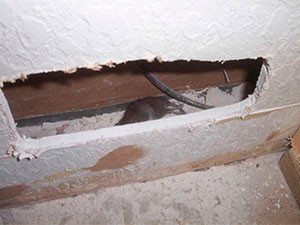
Even small gaps can allow access to walls
Conduct your inspection at dawn or dusk when squirrels are most active. Watch for 30-60 minutes to identify exit points as squirrels leave to forage. Temporarily mark suspected entry points with brightly colored tape for easy reference.
2. Determine If There Are Baby Squirrels Present
Before proceeding with removal, it’s essential to determine whether you’re dealing with a mother squirrel and her babies, which requires special consideration.
| Season | Likelihood of Babies | What to Listen For | Recommended Approach |
|---|---|---|---|
| March-April (Spring breeding) |
Very High | High-pitched chirping or squeaking sounds in addition to adult movement | Use exclusion methods that allow mother to relocate babies |
| May-July | Moderate | Juvenile movement sounds (less coordinated than adults) | Standard removal techniques with careful monitoring |
| August-September (Fall breeding) |
Very High | Multiple movement patterns and nursing sounds | Use exclusion methods that allow mother to relocate babies |
| October-February | Low | Typically single adult movement patterns | Standard removal techniques |
Sealing holes while squirrels remain inside your walls will lead to animals dying in inaccessible areas, creating odor problems and attracting secondary pests like flies and beetles.
3. Choose Your Removal Method
Based on your situation, select the most appropriate removal strategy from these effective options:
Option A: One-Way Exclusion Doors
This is the most humane and often most effective method for removing squirrels from walls, especially when babies might be present.
How to Install a One-Way Door
- Purchase a commercial one-way door or create your own using 1/4-inch hardware cloth
- Identify the main exit point used by squirrels
- Secure the one-way door over this exit, ensuring it can only swing outward
- Seal all other potential entry/exit points with hardware cloth or metal flashing
- The squirrel will exit through the one-way door but cannot re-enter
- Leave the door in place for at least 3-5 days to ensure all squirrels have exited
- Listen carefully for any sounds of remaining squirrels, especially babies
- Once activity ceases, remove the one-way door and permanently seal the opening
Option B: Live Trapping
If exclusion methods aren’t feasible or if you need to remove squirrels quickly, live trapping can be effective.
Before trapping, check your local wildlife regulations. Many areas have specific requirements for trapping and relocating wildlife, and some jurisdictions require permits or prohibit relocation entirely.
For effective trapping:
- Place live traps near identified entry/exit points or along squirrel pathways
- Bait traps with appealing foods such as peanut butter, nuts, or apple slices
- Check traps at least twice daily to prevent unnecessary stress to captured animals
- Relocate captured squirrels at least 5 miles away in suitable habitat (where permitted)
- Continue trapping until all activity in walls ceases
Option C: Professional Wildlife Removal
For complex infestations or if you’re uncomfortable handling wildlife, professional services offer several advantages:
- Expertise in locating all potential entry points
- Specialized equipment for accessing difficult areas
- Knowledge of local wildlife laws and regulations
- Guarantees and follow-up services
- Comprehensive exclusion and prevention solutions
4. Permanently Seal Entry Points
Once all squirrels have been removed from your walls, immediately seal all entry points to prevent reinfestation.
Preventing Future Wall Infestations
After successfully removing squirrels from your walls, take these preventive measures to keep them from returning: Seal any openings or gaps in your exterior walls, as well as around vents and chimneys, to prevent future access. Additionally, consider incorporating natural repellents, such as cayenne pepper or predator urine, to create an unwelcoming environment for these pests. Researching how to deter squirrels naturally can provide you with effective strategies to maintain a squirrel-free home. Seal any entry points with sturdy materials, such as metal mesh or wire, to prevent re-entry. Additionally, consider implementing squirrel removal strategies for homeowners, which may include trimming overhanging branches or securing food sources. Regular inspections of your property will also help identify potential vulnerabilities before they become a problem.
Landscape Management
Trim tree branches at least 10 feet away from your roof and walls to eliminate “bridges” that squirrels use to access your home.
Regular Inspection
Conduct quarterly inspections of your home’s exterior, focusing on the roofline, vents, and utility entry points where damage can create new access points.
Food Source Control
Use squirrel-proof bird feeders, keep pet food indoors, and manage nut-producing trees on your property to reduce attractants.
Consider installing a metal drip edge along your roofline, metal flashing at roof junctions, and heavy-duty vent covers as permanent deterrents against squirrel entry.
Featured Products for Squirrel Wall Removal
Havahart Live Animal Trap
Most EffectiveHow Does It Work
How to Use
- Place the trap along known squirrel pathways or near identified entry/exit points
- Bait with peanut butter, nuts, or apple slices placed at the far end of the trap
- Check the trap at least twice daily to minimize stress to captured animals
- Wear thick gloves when handling the trap with a captured squirrel
- Transport and release at least 5 miles away in suitable habitat (where legally permitted)
- Humane capture without harming animals
- Sturdy construction for multiple uses
- Effective sensitive trigger mechanism
- Easy to bait and set
- Carrying handle for safe transport
- Requires regular checking to prevent animal distress
- May capture non-target animals
- Some states restrict wildlife relocation
- Not effective for baby squirrels
Excluder Pro One Way Squirrel and Rodent Trap
Set and ForgetHow Does It Work
How to Use
- Identify the main entry/exit point used by squirrels in your walls
- Install the device by securing it over the opening using nails or staples
- Use the included copper mesh wool to seal any gaps around the edges
- Adjust the four flaps to ensure a secure fit against irregular surfaces
- Leave the device in place for 3-7 days to ensure all animals have exited
- Once activity ceases, remove the device and permanently seal the opening
- Humanely removes animals without trapping or handling
- Premium heavy-duty metal construction cannot be chewed through
- Includes copper mesh wool (superior to steel wool) for complete sealing
- Easy installation with adjustable flaps for various surfaces
- Effective for multiple species of wall-invading pests
- 3x3 inch opening may not accommodate larger squirrels
- Requires proper installation to be effective
- All secondary entry points must be identified and sealed
- May require additional hardware for certain mounting surfaces
1/4-inch Hardware Cloth
Best for SealingHow Does It Work
How to Use
- Cut the hardware cloth to size using tin snips, leaving at least 3 inches of overlap around the opening
- Shape to fit the contour of the area being sealed
- Secure with screws and washers every 2-3 inches along the perimeter
- Bend edges for a tight fit against irregular surfaces
- For circular openings like pipes, cut a star pattern and fold edges around the pipe
- Effectively blocks all squirrels while allowing airflow
- Galvanized for weather resistance and longevity
- Can be cut and shaped to fit any opening
- Strong enough to resist gnawing and clawing
- More durable than plastic mesh alternatives
- Sharp edges require careful handling during installation
- Heavier than plastic alternatives
- Can be visible on home exterior if not painted
- May require special tools to cut properly
When to Call a Professional
While many squirrel wall infestations can be handled as DIY projects, certain situations warrant professional intervention:
Frequently Asked Questions
How long do squirrels typically live in walls?
Squirrels typically don’t live in walls permanently but use them seasonally. They may occupy wall voids for 4-6 weeks during breeding seasons (spring and fall) or throughout winter in colder climates.
Without intervention, squirrels may continue to use the same wall spaces year after year, potentially establishing a permanent presence in your home.
Can squirrels in walls cause a fire?
Yes, squirrels in walls pose a significant fire hazard. They frequently chew through electrical wiring, removing the protective insulation and creating conditions for electrical shorts and fires.
According to some insurance industry estimates, rodents (including squirrels) are responsible for up to 20% of undetermined house fires in the United States.
What damage can squirrels cause inside walls?
Squirrels can cause extensive damage inside wall voids, including chewing electrical wiring (creating fire hazards), tearing up insulation (reducing energy efficiency), contaminating spaces with urine and feces (creating health hazards), and even gnawing on structural elements like joists and studs.
Over time, this damage can lead to costly repairs and increased utility bills.
Will squirrels leave walls on their own?
Squirrels may temporarily leave wall voids to forage for food during the day, but they won’t permanently abandon a nest site without intervention, especially if they’ve established a den or have babies present.
Even if adult squirrels leave temporarily, they will likely return as long as the entry points remain accessible.
Is it legal to remove squirrels from my walls myself?
Legality varies by location. In most areas, homeowners can legally remove squirrels from their own property, but specific methods may be regulated. Some jurisdictions prohibit relocation of wildlife or require permits for certain control methods.
Contact your local wildlife agency or animal control office to understand regulations specific to your area before beginning removal efforts.
Conclusion: Reclaiming Your Walls from Squirrels
Removing squirrels from your walls requires patience and a systematic approach, but it’s certainly achievable with the right techniques and tools. The most successful strategy combines thorough inspection, appropriate removal methods based on the season and situation, and comprehensive exclusion work to prevent future problems.
Remember that prevention is ultimately the most effective long-term solution. Regular home maintenance, prompt repairs of potential entry points, and landscape management will help keep squirrels where they belong—outside your home.
By following the steps outlined in this guide, you can effectively evict unwanted squirrel tenants from your walls and restore peace and safety to your home.
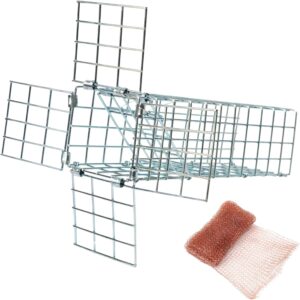

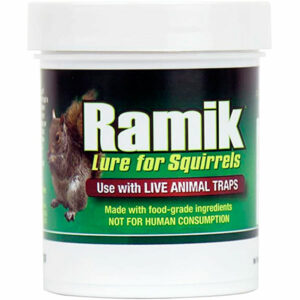
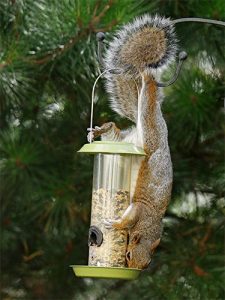

Forget strobe lights in the attic. It will bother them but not enough to leave. Use a rat trap with peanut butter which they find irresistible.
Use spray foam in the hole, then after expansion they will not be able to enter. cut off foam on the outside of the house and cover with sealant because the foam will break down over time and allow moisture in.
Ìve dealt with squirrels chewing into my shed, one lower gap I spotted and I stuffed steel wool pads into every hole on the inside, they’ve pulled insulation out from behind the paneling for their nests, not sure if it will work or not, after just reading they only need 1.5 inches to squeeze thru, I have that size gap above the door, does anyone have any suggestions?
Caught a squirrel bastard in my folks house with a 2 ended humane trap, they LOVE peanut butter. drive approximately 5km away, open the trap and you’ve done it.
We have a squirrel in our finished basement for about a week now can’t seem to catch the little bastard! I set two rat traps with peanut butter and a live trap with peanuts and Oranges I don’t know what else to do.
Had the same problem. Easiest solution leave a window open just a little. He’s looking for a way out too. This worked for us. We put water bottles along windowsill to let us know if he left and sure thing, the bottles were on the floor & squirrel gone. Worth a try and no cost to you.
Can Squirls chew through wood
Yes. they can chew through wood.
Finding pest animals in your home can be a scary and annoying thing. While it would be nice to get them out quickly it would also be great if you didn’t have to kill them either. So, I liked that you talked about calling in an animal control service to get them out.